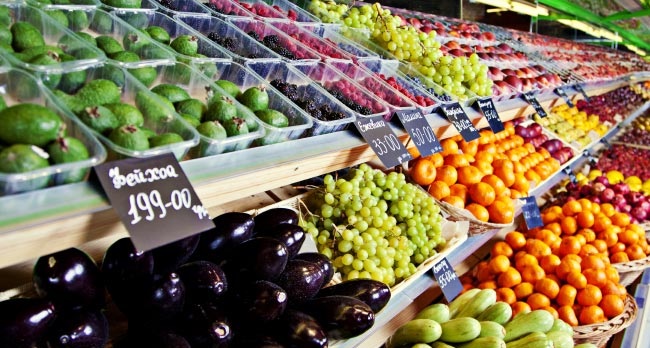
Visit our other sites
-
Fapas - Proficiency Testing
Globally recognised provider of proficiency tests, running over 400 tests annually across an extensive range of matrices and analytes
-
Great Crested Newts Testing
A single sample taken by an ecologist at any time during the newt breeding season can determine their presence or absence, saving you time and money
DROPSA is a 4-year project involving 26 partners from Europe, Asia, New Zealand and North America. Focusing on emerging threats due to Drosophila suzukii, and other bacterial pathogens damaging soft fruits.

DROPSA is a 4-year project involving 26 partners from Europe, Asia, New Zealand and North America. It is focusing on new and emerging threats due to Drosophila suzukii, and the bacterial pathogens Pseudomonas syringae pv. actinidiae, Xanthomonas fragariae and X. arboricola pv. pruni. These pathogens and Drosophila suzukii are a major concern and challenge to the fruit industry because their eradication or containment is not possible. Hence the development of targeted integrated pest management (IPM) is vital to minimize the economic impact on EU fruit production.
Fruit crops account for 17% of the value of the EU’s agricultural production and the fruit and vegetables supply chain has an estimated turnover of more than €120 billion with over 550,000 employees and around 1.4 million growers. It is estimated that insect pests destroy approximately 14% of all potential food production globally. Therefore it is reasonable to estimate that fruit losses from pests and pathogens accounts for over €10 billion in revenue and 3 million tonnes of produce to the EU fruit industry.
Why not watch the Dropsa Animation
Within this animation, we showcase the fantastic science delivered by the Dropsa project team. Neil Audsley, project lead, Fera said: “It is estimated that insect pests destroy approximately 14% of all potential food production globally. Therefore, it is reasonable to estimate that fruit losses from pests and pathogens accounts for over €10 billion in revenue and 3 million tonnes of produce to the EU fruit industry. Hence the development of targeted integrated pest management (IPM) is vital to minimise the economic impact on fruit production in the EU region.“With this huge challenge on the horizon and with 4 years’ worth of research and know-how, we are well on the way to providing strategies,, instruments and tools to control and manage new and emerging pests”.
Key Outputs to date:
Pathways of introduction of fruit pests and pathogens - Alert lists of pests that may be introduced into Europe with fruit trade are being prepared for selected crops (e.g. apples, Vaccinium berries, wine and citrus fruits). Particular case studies involving international fruit trade networks and transhipments within the EU as pathways for several of these agents are also being undertaken. A consistent approach is being developed to ensure that methods developed in case studies can be widely applied. The risk analysis methods draw on previous collaboration in the FP7 PRATIQUE project, EUPHRESCO and other projects involving international partners. (JKI, EPPO, Imperial College).
Pathogen source-tracking and evolutionary risk - It is postulated that the bacterium Xanthomonas fragariae is introduced via air transport. Bacteria can be incorporated in small droplets of rain or artificial irrigation of strawberry crops, and spread though the aerosol to clean plants. Mowing strawberries is considered a dangerous activity for spread of the bacterium. Wet infected plants were mown and the presence of X. fragariae was monitored using an air sampler. The amount of X. fragariae decreased exponentially with distance, but bacteria could be detected up to 100 metres from the source. This is a significant distance considering that very low numbers of bacteria (10-100) may cause the disease.
DROPSA investigates D. suzukii in its area of origin - Various studies were carried out in China by DROPSA partners to better understand the biology and ecology of D. suzukii in its area of origin. Work was conducted in several provinces but particularly around Beijing by CABI, and in Yunnan by the Yunnan Agricultural University. This research includes population dynamics, host range, overwintering biology and attack rates in fruit crops. Samples have also been collected for molecular studies to investigate the routes of invasion, in collaboration with partners in Europe and North America. Of particular importance is the study on natural enemies. Several parasitoids were reared from D. suzukii in Yunnan that will be studied for their suitability as biological control agents in Europe.


Turning science into solutions

Just some of the deliverables achieved by the project:
Control of Drosophila suzukii and D. melanogaster with ozonegas on air-drying grape
Evaluation of the edge-crop movements
Effect of landscape composition on Drosophila suzukiipopulation in vineyards.
Screening existing compounds on pathogens
Novel antimicrobial compounds
Isolation, identification and testing of novel biological control agents
Testing chemicals and biological control agents on Drosophila suzukii
Want to know more about the individual elements presented from Dropsa by our Fera scientists
The fruit fly, spotted winged Drosophila (Drosophila suzukii), is a major concern and challenge to fruit production and causes significant economic damage. Since its introduction in 2008, D. suzukii continues to spread in Europe unabated. Eradication or containment of this pest is not possible, so there is a pressing need for effective, innovative and practical solutions for its control. There is also an on-going need for the discovery and development of new pesticides due to the loss of existing products through the continuing development of resistance, the desire for products with more favourable environmental and toxicological profiles leading to withdrawal of active ingredients, and the need to implement the principles of integrated pest management. Within the DROPSA project Fera is testing control products (new chemicals and biological agents) in the laboratory that have the potential to be developed for use in the field. Fera is also developing alternative pest control strategies based on disrupting the behaviour and physiology of Drosophila suzukii.
Want to do know more about the other EU projects we are working on?


